|
McCloud River Railroad Company Diesel Demonstrators |
|
|
| Diesel manufacturers from the dawn of the diesel age developed demonstrator units typically for each new model or technological advancement that would tour potential customer railroads so that they could test the units in their operations. McCloud River is known to have tested demonstrator units four times. |
|
|
|
Baldwin DRS-6-4-1500 #1501 Baldwin #1500 was their c/n 73474, built 3/14/1948. This unit spent about six and a half months working across the western United States for various railroads, including the Bamberger Railroad, Brooks-Scanlon Lumber Company, California Western, Fruit Growers Supply Company, McCloud River (in early June 1948), Northwestern Pacific, Sierra, Southern Pacific, Tooele Valley, Trona, and Western Pacific. McCloud River signed a two day lease for this locomotive on 12/1/1947 that called for the machine to be picked up from and returned to Mt. Shasta City. Following the end of the demonstration tours Baldwin sold the locomotive to Kennecott Copper Corporation for use on their operations out of Magna, Utah, as their #901. After several years of service the unit was seriously damaged in a wreck with a Denver & Rio Grande Western train. Kennecott repaired the locomotive, equipping it with four-axle Baldwin trucks in the process as well as a new number, #734. Kennecott retired the unit in 1983 and donated it to the Promontory Chapter of the National Railway Historical Society, who scrapped it in 1984. The McCloud River had by all accounts already firmly decided to buy a diesel electric along the lines of the #1501 before it arrived on the property. The #1501 reportedly derailed numerous times while on the McCloud, showing dramatically that track standards good for 90-ton Mikados won't necessarily support 160-ton diesels, especially ones with long rigid wheelbases. The unit also only had four traction motors, with an unpowered idler axle in each truck, and the resulting lack of traction and especially braking ability caused the railroad to buy the DRS-6-6-1500 model, which had brakes and traction motors on all six axles. The demonstrator unit also converted horsepower into higher speeds, which was not especially welcomed on the McCloud operating profile. 
A broadside of the #1501 switching in the McCloud yard. T.E. Glover collection. 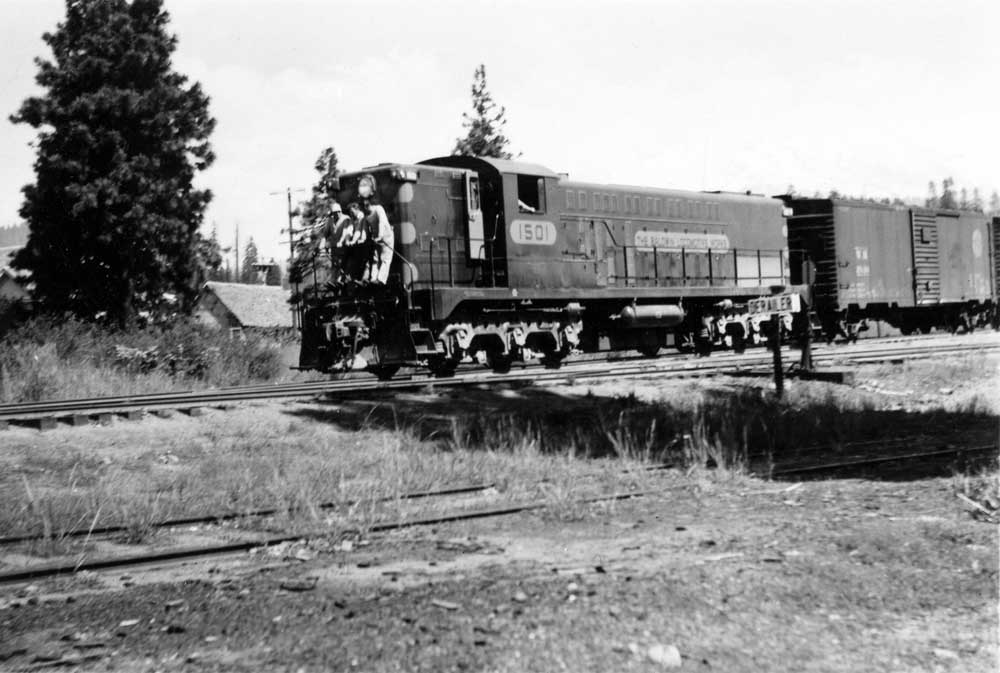
Another view of the #1501 switching in McCloud. 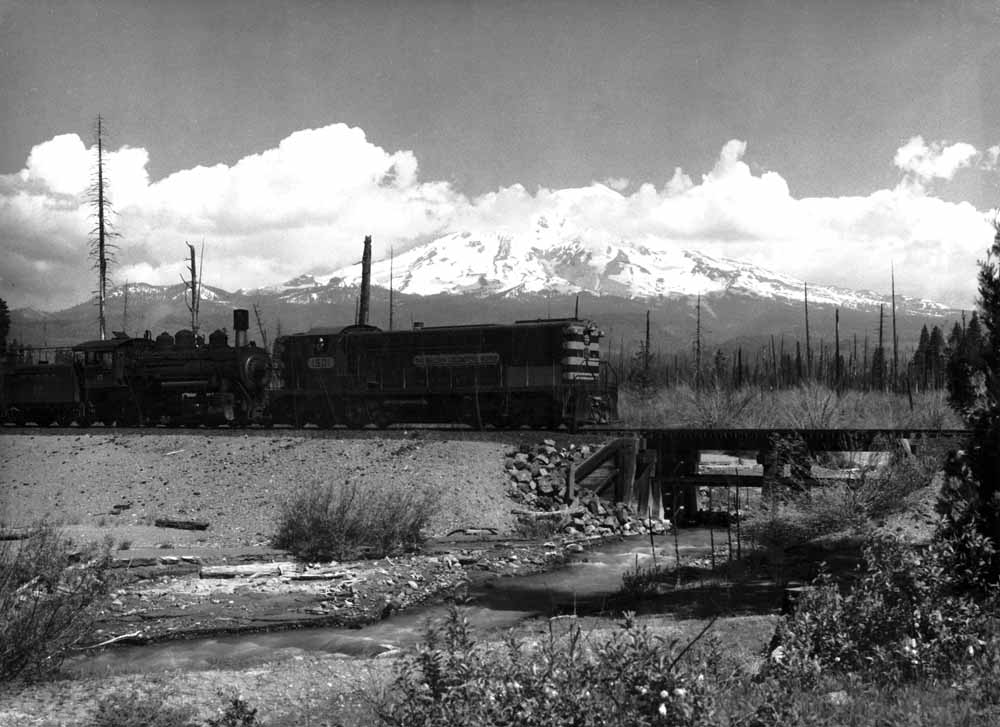
The #1501 made at least one trip east of McCloud on a freight with the #15, seen here at Mud Creek. Travis Berryman collection. 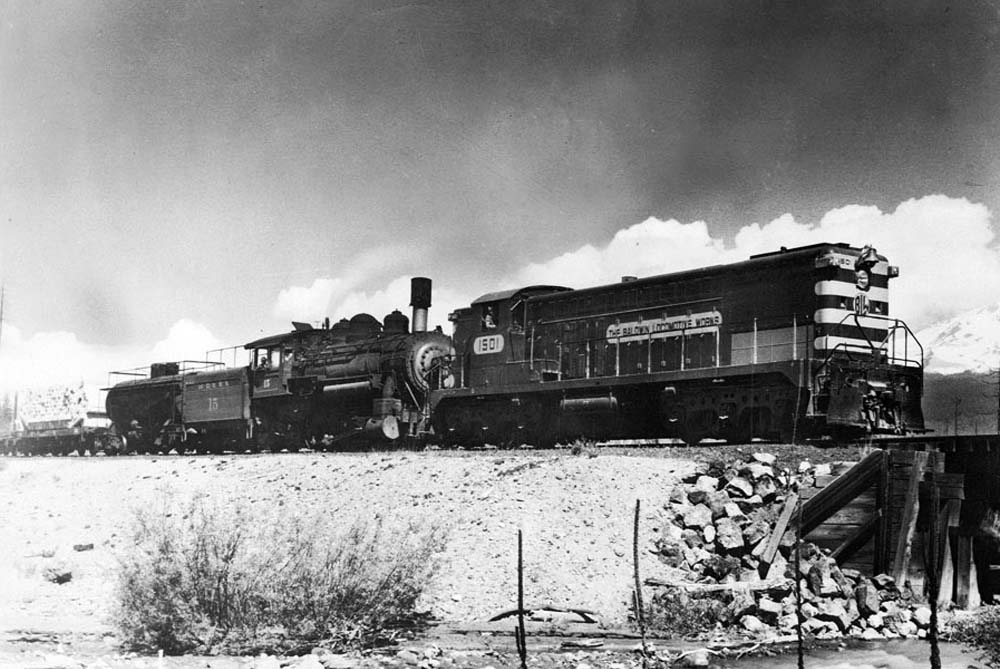
One last view of the #1501 and #15 on the line east of McCloud. 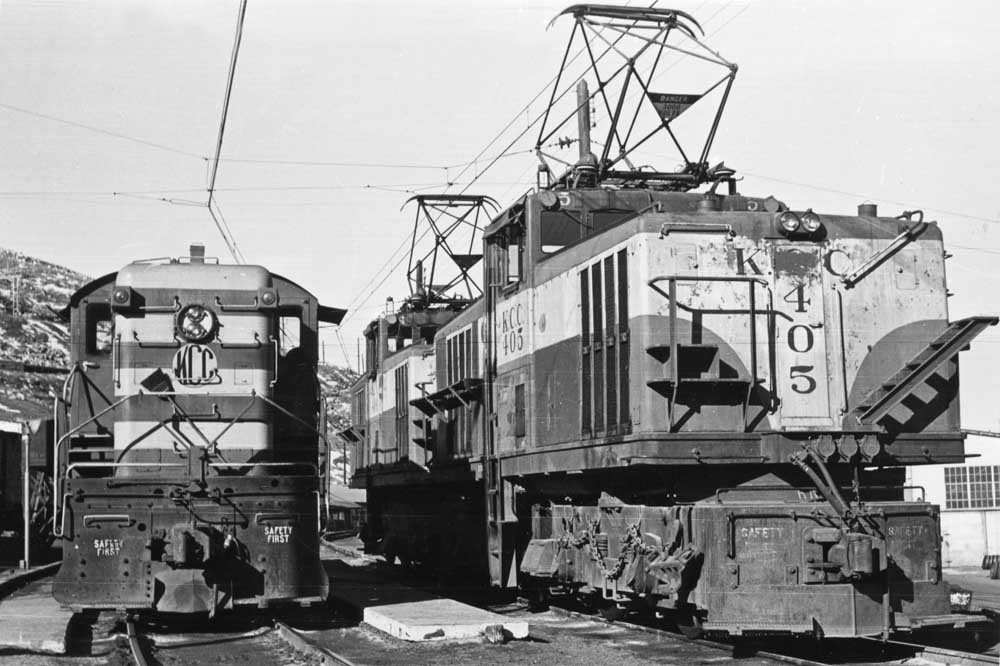
Baldwin painted the #1501 in a dark green and gold paint scheme for its tour, which Kennecott adopted for all of its equipment after purchasing the unit. The former demonstrator, by now numbered 734, is seen
here in Magna, Utah, working next to a couple Kennecott electric locomotives. 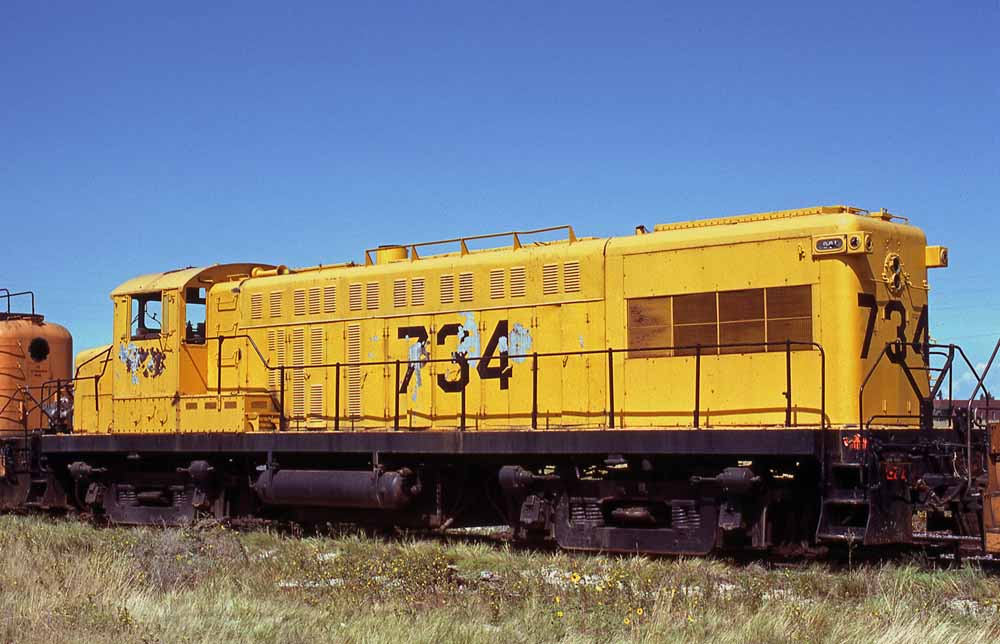
Kennecott #734 sitting derelict in Salt Lake City on 4 September 1983, shortly before being scrapped. James C. Herold photo. 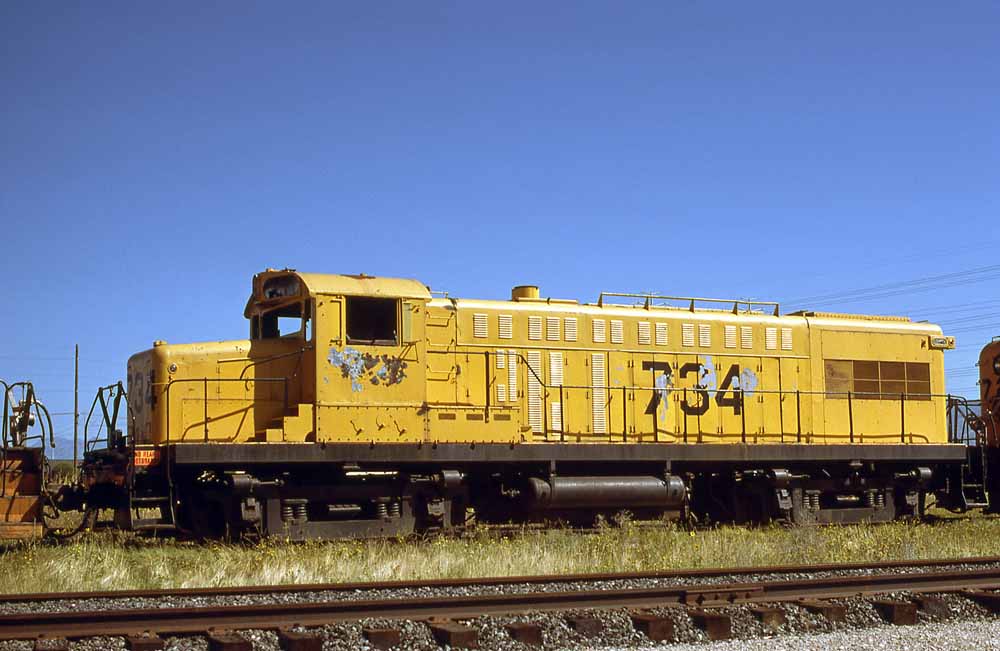
The other end of Kennecott #734 sitting derelict in Salt Lake City on 4 September 1983. Keith E. Ardinger photo. |
|
|
|
Baldwin DS-4-4-750 #750 and #751 Baldwin #750 and #751 were their c/n 74814 and 74815, built. 6/1950. The units first operated in and around Philadelphia before heading to California in late summer. The units demonstrated over many railroads, including Brooks-Scanlon Lumber Company, Fruit Growers Supply Company, Longview Portland & Northern, McCloud River (in 9/1950), Medford Corporation, Northern Redwood Lumber Company, Northwestern Pacific, Pacific Electric, Pacific Lumber Company, Sierra, Southern Pacific, Weyerhaeuser, Willamina & Grande Ronde, Valley & Siletz, and Yreka Western. While operating on the Yreka Western the units hit a lumber truck at a grade crossing, killing the truck driver. At the conclusion of the demonstration tour Baldwin sold the pair to Weyerhaeuser, who used them on their logging railroads based out of Klamath Falls, Oregon, as their #101 and #102. Weyerhaeuser retired the units around 1983, with the #102 scrapped by the mid-1980s. Weyerhaeuser conveyed the #101 to the Great Western Railway Museum, which placed it in storage in the former Oregon, California & Eastern yards in Klamath Falls, Oregon. The Oregon Coast Scenic Railroad of Garibaldi, Oregon, acquired the #101 in late 2021 along with the rest of the Great Western collection, but the railroad does not plan to retain the locomotive and efforts are underway to convey it to another owner and display site in the area. Baldwin intended the pair to promote their forthcoming S-8 and S-12 model switchers, and they fit the mold that several manufacturers were trying to sell, namely switcher type locomotives that could be operated either as single units or in multiple unit configuratipn to haul heavier trains or deal with steeper grades. McCloud had already considered and then rejected that concept when it decided to buy the #28, but reconsidered that decision. The performance of the two demonstrators may have gone a long way towards the decision to buy the two switchers from Baldwin a few years later.
No pictures of the #750 or #751 on McCloud seem to have survived. They are seen here in their builder's photo taken just before they left the factory. Jerry Lamper collection. 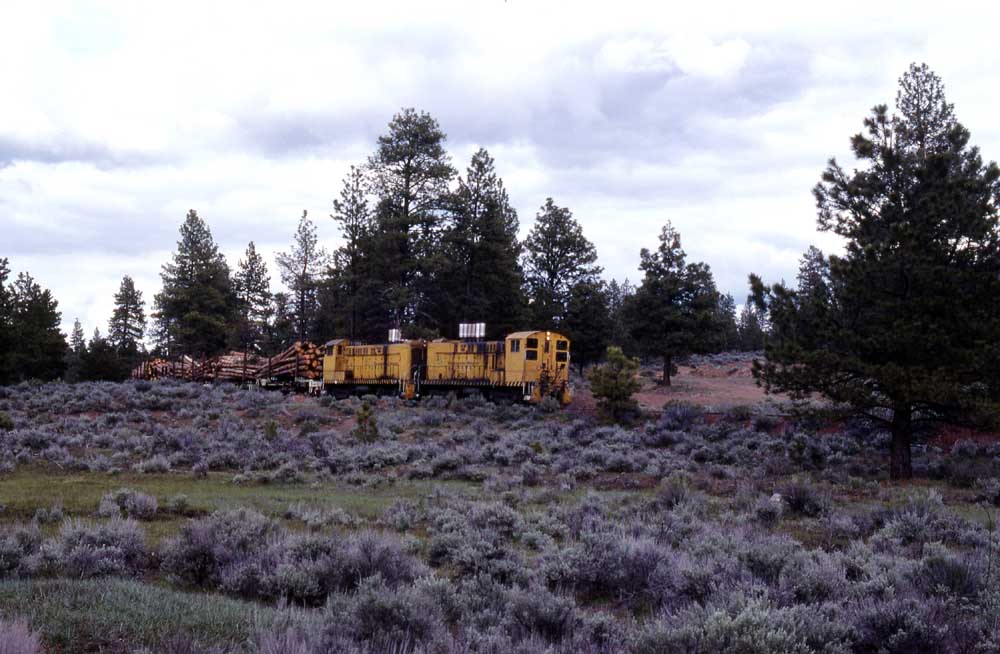
Weyerhaeuser Timber #101 and #102, the former demonstrators, are seen here leading a log train out of the woods east of Klamath Falls. John Henderson photo, Jeff Moore collection. 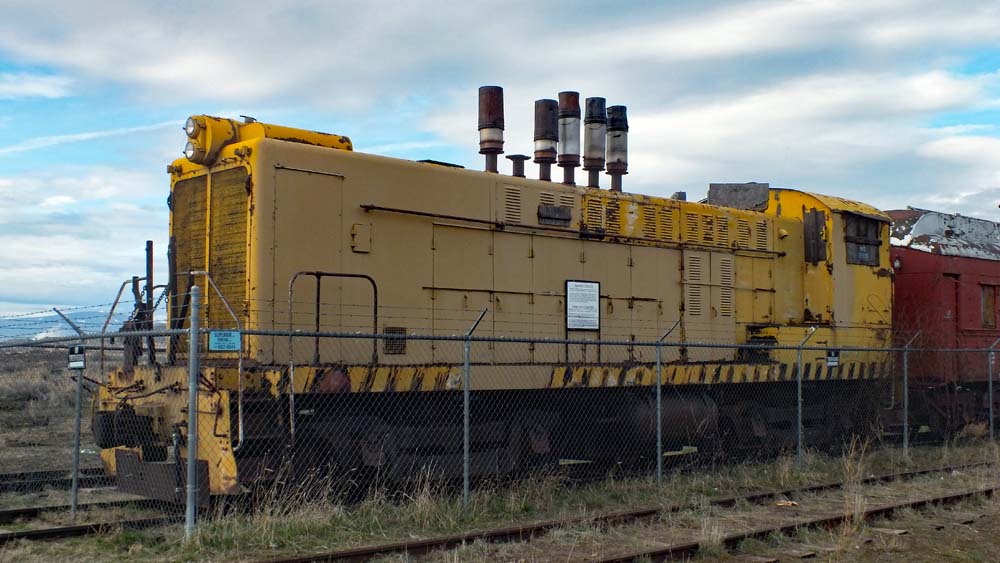
Weyerhaeuser Timber Company #101, formerly the Baldwin #750, in storage in Klamath Falls, Oregon, in March 2017. |
|
|
|
EMD TR-6 Cow/Calf pair #1600 and #1600B EMD's TR-6 demonstrator promoted their version of the multiple switchers working together, but in their case they permanently coupled together two 800-horsepower switchers, one with a cab (the "cow") and one without (the "calf") that would be controlled from the "cow" unit. The pair demonstrated on the Southern Pacific and many connecting shortlines, including at least a day or two on the McCloud River, from November 1950 through April 1951. EMD produced a report to McCloud trying to get them to purchase similar locomotives without success. SP purchased the demonstrator set and ordered several similar cow/calf pairs, mostly for hump yard switching and branchline chores. The cow, EMD's c/n 13549, served SP well as their #4600 and then #1100 until larger power and increasing age prompted its retirement. SP optioned the #1100 in 1985 to John Bradley of Laytonville, CA, who stored it on and occassionally leased it to the Eureka Southern railroad. Bradley returned the unit to the SP when his option expired in 1986, and SP promptly sold the unit to Sierra Pacific Industries for use on the Susanville Division of its Quincy Railroad. The #1100 now resides in the collection of the Western Pacific Railroad Museum in Portola, California. 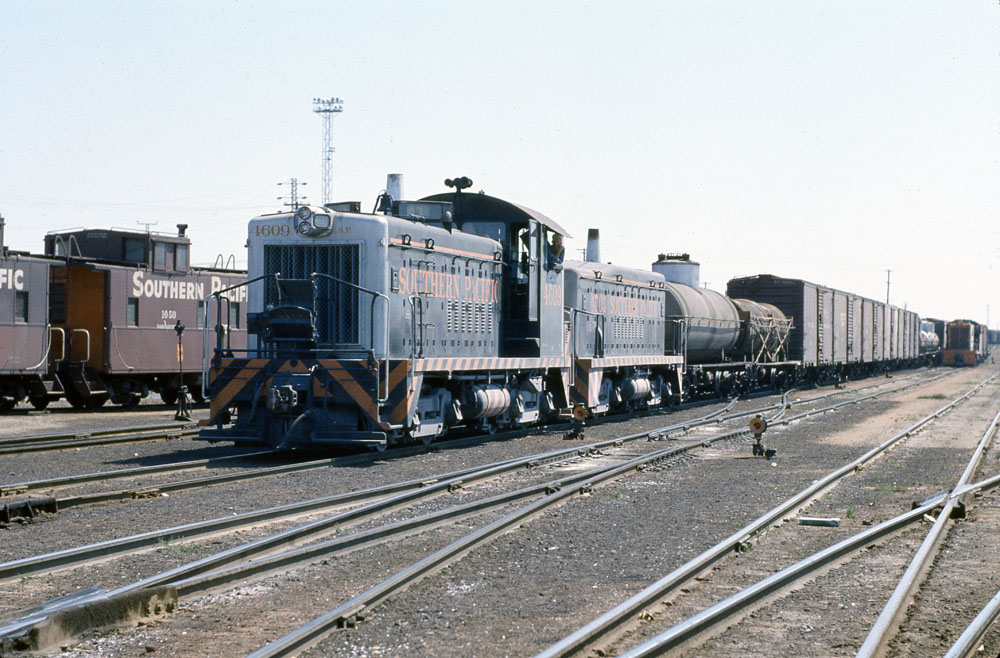
SP cow-calf set #4609 and #4703 seen here in Roseville are an example of the similar set that demonstrated on the McCloud River. C.G. Heimerdinger photo, Jeff Moore collection. 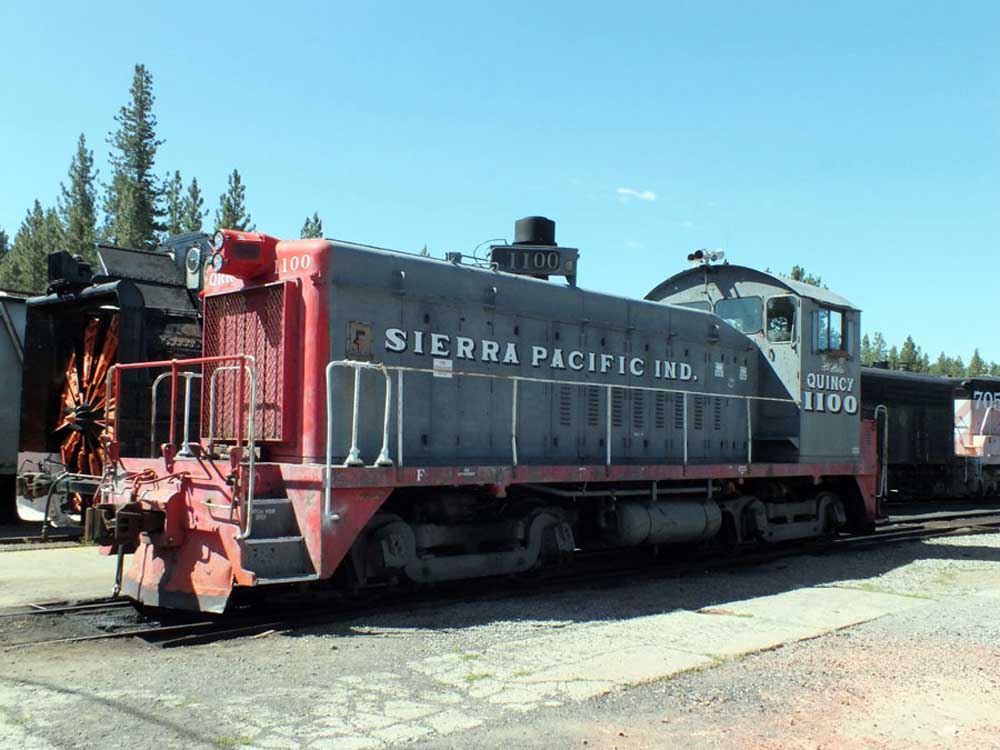
The one time EMD demonstrator #1600 in the Western Pacific Railroad Museum in Portola. |
|
|
|
Alco C-415 #415 Alco's C-415 demonstrator #416, their c/n 3349-01, built 4/1966, spent a week testing on the McCloud River in February 1967. A full page on this event can be found on this website at the following link: Alco C-415 Demonstrator on the McCloud River. |
|
|